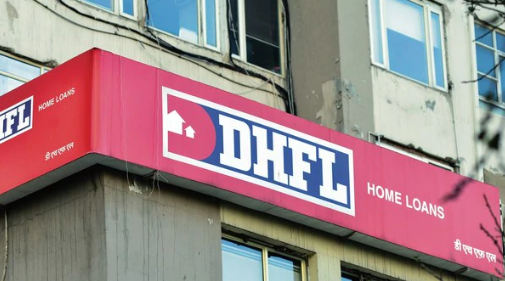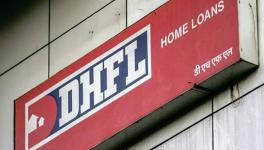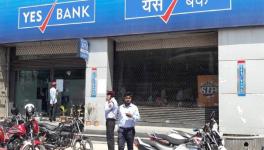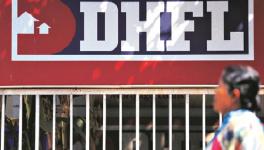DHFL Default: Financial Sector on Edge, Analysts Warn of Contagion

Image Courtesy: Livemint
As India’s financial sector awaits to see the extent and the impacts of the default by DHFL — Dewan Housing Finance Corporation Limited — on debt repayments, analysts estimate that “banks, pension and mutual funds, and insurance companies together have an exposure of around Rs 1 trillion to the company”.
On June 6, a note from global financial firm CLSA warned of “contagion”, as quoted in news reports:
“This default could accentuate contagion risk in the financial sector (in the backdrop of IL&FS’ default last year), leading to higher costs and polarisation of funds to better-rated NBFCs — those with liquid balance sheets will also be better off.”
Meanwhile, the governor of the Reserve Bank of India (RBI), Shaktikanta Das, said the central bank was monitoring the Non-Banking Financial Companies (NBFC) sector and the housing finance companies.
“The RBI will not hesitate to take whatever steps are required to ensure that financial stability is not adversely impacted in any manner by any development,” said Das on June 6.
But the regulator of the financial sector did not announce any measures to address the liquidity issues for stressed finance companies.
Analysts from Nomura financial group analysts, however, have pointed out that the RBI and the government need to “segregate the potential solvency issue at DHFL from liquidity issues at other larger non-banking financial companies and housing finance companies,” according to this news report.
“A possible solution could be to provide a liquidity line to solvent NBFCs/HFCs so that the DHFL issue does not lead to a contagion,” said Normura analysts in a statement.
Meanwhile, adding to the list of hurt investors who had bought the debt instruments of DHFL —mutual funds took a drubbing after DHFL defaulted on its interest payment — are the public-sector Life Insurance Corporation (LIC) and ace individual investor Rakesh Jhunjhunwala.
Also read: Mutual Funds in Trouble as Housing Finance Firm DHFL Defaults On Debt Repayment
The value of their holdings in DHFL has dropped by nearly 38% since March 2019-end, as this report says. The LIC had holdings of 3.44% stake in DHFL at the end of March 2019, valued at Rs 162.2 crore. Jhunjhunwala increased his stake in the company to 3.19% at the end of the March 2019 quarter, valued at Rs 150.25 crore.
Meanwhile, the State Bank of India (SBI) has issued a statement saying that “the overall quality of the NBFC asset portfolio” of the country’s largest investor “continues to be good”.
An SBI spokesperson said the bank had been monitoring its exposures to the NBFC sector — which has been rattled by the still unfolding IL&FS fiasco — for the past 10 months.
“Challenges faced by accounts like DHFL have already been factored in when we have given our estimate for the stress that the bank would have to deal with in FY20 and included in our estimates for slippage and loan loss provisioning for the current financial year,” said the statement.
‘Liquidity Crisis’ Amid Allegations of Fraud
DHFL is the country’s third largest mortgage finance company. However, the deposit-holding housing finance firm had been facing a liquidity stress for some months now. It missed an interest payment of Rs 960 crore on its Non-Convertible Debentures (NCDs) due on June 4. And the same day, the net asset values (NAVs) of hordes of mutual funds that had invested in DHFL crashed.
On June 5, four credit rating agencies — CRISIL, ICRA, CARE, and Brickwork Ratings — downgraded the rating of the firm’s debt papers to ‘D’ (or default).
Also read: Cobrapost Expose Claims DHFL Siphoned off Rs 31,000 Crore Public Funds
At the end of January this year, investigative news portal Cobrapost had claimed that DHFL, promoted by the Wadhawans, had siphoned off Rs 31,000 crore of public money “through grants of loans and advances to shell companies and by using other means”.
At a press conference, Cobrapost alleged that around Rs 21,477 crore of DHFL funds that were put into various shell companies as loans and investments were not declared to the Ministry of Corporate Affairs. Cobrapost also alleged that the company had under-reported donations of around Rs 20 crore to the ruling Bharatiya Janata Party (BJP).
This press conference had been addressed by Cobrapost editor Anirudhha Bahal, senior journalists Paranjoy Guha Thakurta and Prem Shankar Jha, senior lawyer Prashant Bhushan, former BJP leader and ex-minister Yashwant Sinha, and market analyst Hemindra Hazari, among others.
The investigative website claimed it had “uncovered” this scam after “closely analysing documents available with public authorities and information available in public domain”.
Last September, concerns were raised regarding the company’s liquidity position after DSP Mutual Fund sold some part of its debt securities with DHFL, triggering a crash in the housing finance firm’s share prices, which has occurred again since June 4 this year.
Banks Will Need Massive Haircuts
Meanwhile, analysts say that Indian banks gave loans worth Rs 50,000 crore in the form of loans and bonds to DHFL, and hence, will have to take a significant haircut.
“Besides, life insurers, including Life Insurance Corporation (LIC), and pension funds have an exposure of another Rs 30,000 crore to the company. Dewan Housing also raised deposits of Rs 10,000 crore, or 10% of its total liability, from retail investors. It raised another Rs 10,000 crore from mutual funds and via external commercial borrowings,” analysts say.
The CLSA said, “Mutual funds, with an exposure of Rs 5,000 crore, or 0.4% of debt AUM, will be the first to take mark-to-market (MTM) hits of as much as 75%. Banks will also face similar MTM risks on bond books, but for loans they will follow 90 days past overdue for NPLs (non-performing loan) and time-based provisioning that starts from 15%.”
Get the latest reports & analysis with people's perspective on Protests, movements & deep analytical videos, discussions of the current affairs in your Telegram app. Subscribe to NewsClick's Telegram channel & get Real-Time updates on stories, as they get published on our website.
























